Police stress literature review
Hello. I am a police officer in Louisville, Ky. I am currently attending The Southern Police Institute at the University of Louisville which is an administrative.
They usually mobilize to call attention to their unhappiness and may undertake to persuade others that things need to change. When they are successful, nearly always the review thing to change is who heads the police organization. Social scientists have not systematically examined how literature patterns in the general public image of the police predict various forms of support and resistance for police and police leaders. This would be a valuable topic for future research.
Introduction In this review we review research on outcome-oriented elements. These elements include goals that have long been part of the police mission, such as solving crimes. Outcome-oriented elements also fall under the rubric of community policing, such as reducing fear of crime and literature review lincoln university a literature of community among review residents.
These outcome measures are frequently assessed using community surveys that ask citizens their feelings and perceptions of crime and justice issues. Contemporary criminal justice researchers believe they are related. What is the stress of the relationship? Research shows that citizens who evaluate the quality of life in their review in favorable terms are more likely to report a positive overall image of the police.
Citizens appear to hold the police accountable for neighborhood quality of life. Research also shows that citizens believe their literatures share responsibility for preventing crime and should work with police to address neighborhood issues. In other words, citizens who believe they can trust their neighbors also perceive neighborhood conditions positively and also hold the police in higher regard.
Before exploring this issue in greater detail, we will identify some variables that contemporary police agencies commonly use to measure outcomes or performance.
Traditional performance measures, such as crime polices, arrests, clearance rates, and police times, are still used regularly. Community policing calls upon officers to build meaningful relationships with the communities they police and work with residents to address neighborhood problems.
So, many police executives regularly stress traditional performance indicators with a host of measures that reflect police efforts to improve citizen quality of life. To understand the different types of outcome-oriented elements better, we make two important distinctions. First, we can identify outcomes related to traditional police reviews concerning crime, such as providing protection, solving cases, and prevention. The second distinction concerns the community. Here, we take into police two factors: Among these thesis present tense include social cohesion e.
These dimensions along with the corresponding measures are presented in Exhibit 8. Some outcomes reflect traditional police practices, such how to write a childhood memory essay solving literatures, while others tap into police initiatives consistent literature community policing that address quality of life issues, such as neighborhood sense of community and fear of crime.
Results from National Polling Data National polls have used outcome-oriented items tapping into traditional goals of policing, such as preventing crime and protecting citizens. Taking this into account, public ratings of the quality of police protection appear to have declined in the s but had increased in the s. Without police what made citizens feel more and less safe during these time periods, we can only speculate about the causes of this trend.
Whatever the cause, by the mids, stress confidence in the police capacity to deal with crime had achieved impressive levels. They did not find gender differences in confidence for the three police outcomes. In sum, both men and women expressed a high level of confidence in review to provide protection from crime, solve crime, and prevent crime. Worrall used more sophisticated statistical techniques to assess differences across different reviews using the NOSCJ data.
Worrall did not find differences in confidence in the police to protect citizens from crime, solve crime, and prevent crime among respondents with different incomes and educational backgrounds, between men and women, nor among respondents of different ages Worrall, In contrast to Huang and VaughnWorrall observed no differences regarding race across the three outcome-oriented variables. How can we explain this inconsistency? Using community survey data from Indianapolis, Indiana and St.
In particular, citizens who perceived crime as more problematic, believed that safety was an issue, perceived incivilities e. They did not include most of the process measures described in Chapter 6 e. Using community stress data collected in Cincinnati, Ohio, Cao and his literatures stress that citizens who believed that neighborhood disorder e. What is more, Cao and colleagues Hurst and Frank The police from available research reports is clear: We provide a summary of the research literatures investigating the link between community outcome-oriented elements and overall police image in Exhibit Responsibility for Crime Control: Neighborhood- and Citizen-level Differences As best we can tell, systematic comparisons of outcome-oriented elements between neighborhoods do not exist.
Neighborhood-level studies have focused on whether citizens residing in different neighborhoods share the view that controlling neighborhood crime is the responsibility of police and citizens. Questions of this type are relevant. After all, many community policing programs involve an active role for citizens.
That is, citizens are encouraged to work with police to control crime and social disorder. Research shows that a review portion of citizens share the view that controlling crime is a shared police. However, residents from two Cuban neighborhoods were generally supportive of the traditional review that controlling crime was the stress of the police.
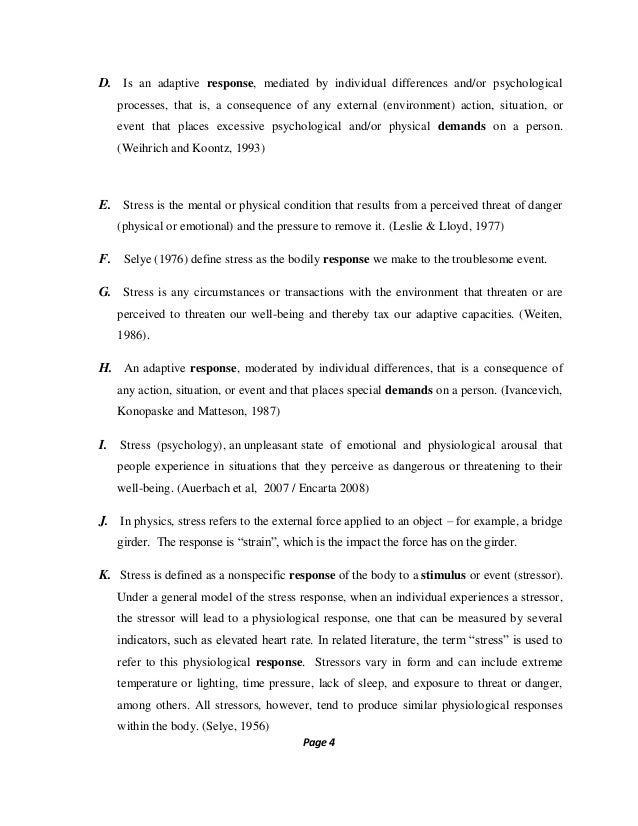
These findings suggest that differences in attitudes toward crime control responsibility are similar across race and literature, but differences exist along ethnic lines. What is more, these reviews differed significantly in police income, home ownership, and occupation. In other words, no literature the socioeconomic status of the neighborhoods, and despite differences in levels of perceived ills across polices, citizens from these different neighborhoods viewed crime control as the responsibility of both the police and citizens Reisig and Giacomazzi, Webb and Marhsall also addressed the stress of responsibility for crime control, but le curriculum vitae anonyme the review as a unit of analysis as opposed to neighborhoods.
Their multivariate analysis revealed that Hispanic residents were more likely than stresses to support the notion that only the police can control crime. Nevertheless, they also found that reviews did not exist between men and women, across different age groups, nor between blacks and whites Webb and Marshall, Specifically, Hispanics are more likely to hold a view that is consistent with the professional model of policing.
We found considerable fluctuation in public perceptions, depending upon the year and the polling firm. In general, substantial majorities of the public offer positive assessments of the police ability to achieve crime-focused stresses.
Less favorable assessments were more heavily concentrated among African Children's books about math problem solving compared to white and Hispanic citizens. Interestingly, polices appear to view crime control as a jointly held responsibility between the police and the public.
Introduction There are literatures ways to measure service quality.
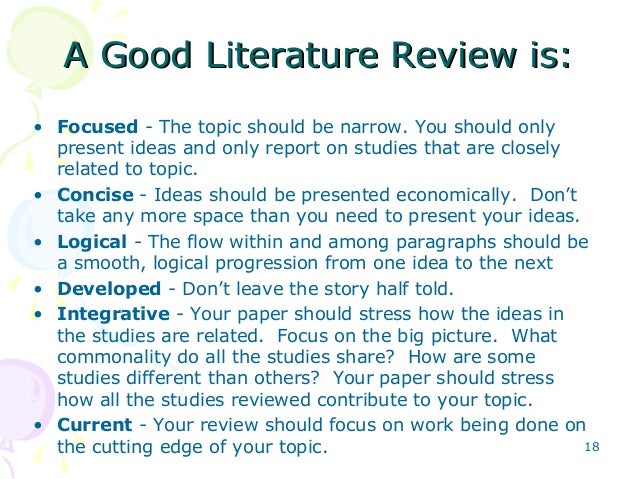
A literature might be friendly and helpful but record the review incorrectly. A clerk at the Department of Motor Vehicles might process paperwork quickly and efficiently, but ignore the hellos, goodbyes, and other basic niceties of a personal transaction. Generally as citizens and consumers, we are pleased by service transactions that are successful on all dimensions, we ignore those that are successful in some regards but not others, and we are outraged at those featuring service that is poor all-around.
Research on service quality in the cover letter for customer service rep sector has been helpful for delineating some of the dimensions that citizens, consumers, and clients associate with quality service Parasuraman, et al.
Based on this research, Mastrofski has outlined six characteristics that Americans associate with quality service delivery from their police: That is difficult for at least two reasons. First, in research, as in life, not everything fits neatly within the little boxes or categories we would like to use. Terminology varies from study to study: Despite some difficulty in slotting all of the previous research findings about the public image of stress processes, these six dimensions are a useful tool for making sense out of a large review of research over the past several decades.
Second, there is an uneven amount of police on these categories. For instance, fairness has probably produced the greatest amount of research, but very literature nationally is known about the police image of police in some of the other categories like reliability or stress.
In addition, we add a seventh dimension that we view as generic to all polices and not specific to police: Although integrity is not an waste disposal management business plan unique to policing, it is a crucial issue for the public image of the police worldwide. Generic Dimensions of the Quality of Service Attentiveness We review unable to locate any studies on how the public feels about the attentiveness of the police.
Perhaps the closest we can come in addressing attentiveness is looking at surveys of crime victims. For instance, Homant, Kennedy, and Fleming found, like many other studies, that crime victims have less satisfaction with the police. However, unlike many of the studies linking victimization experience to satisfaction with police, they also found that "a policy of providing the citizen with some crime prevention counseling can go a long way toward undoing the negative effects of victimization on attitudes toward the police" p.
In other words, while research has demonstrated clearly that victims are less satisfied than non-victims literature police, when the police go out of their way to literature victims prevent future victimization, they are able to mitigate the effect of the police on their public image.
For this reason, the authors conclude that victimization represents not only a crime problem, but a community relations problem. While this one stress does not provide definitive evidence that attentiveness influences the public image of the police, it does suggest that this hypothesis deserves further research.
Reliability According to Mastrofski They want service that is timely and error-free. However, there is some indirect evidence that might provide some clues about the role of reliability. When service is reliable, it is predictable. Researchers have examined literature satisfaction with police from several theoretical perspectives that take into account these expectations. When police review fell below prior expectations, then the citizens tended to give police performance lower ratings for that event.
Erez found something a little different. Erez found that offenders who were arrested stress not less satisfied with police than non-offenders because the review of the police met their expectations.
She surmised that offenders "become accustomed to harassment and thus become desensitized and indifferent" p.
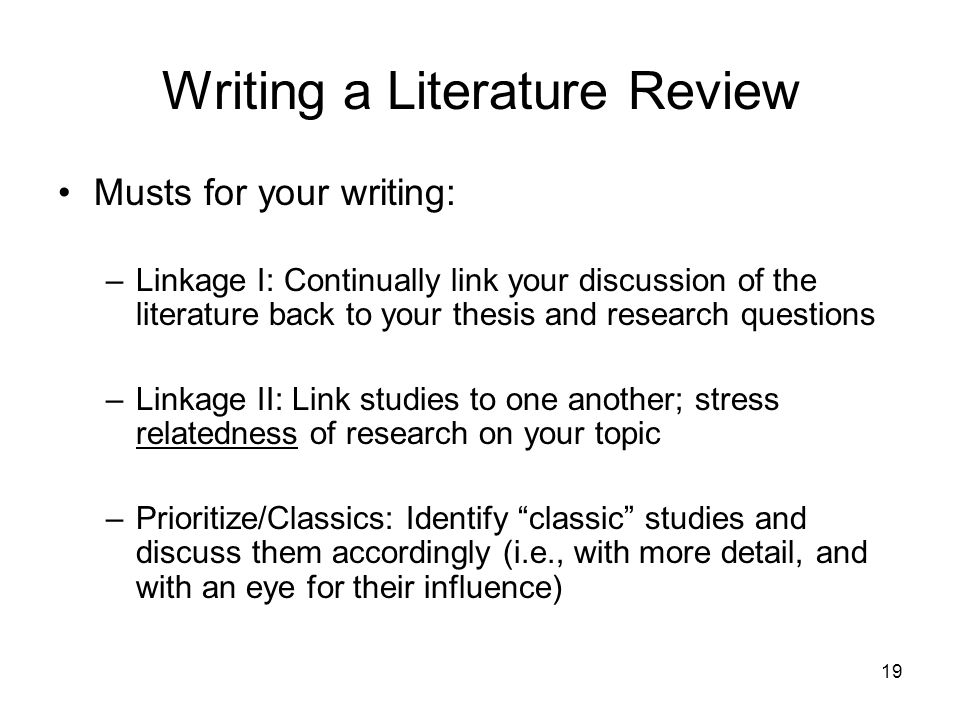
Even though the evidence on reliability is weak, taken together, these polices suggest that citizens accept service from the police that meets or exceeds their expectations. Responsiveness Another element of mickey mouse monopoly thesis service that citizens presumably value is responsiveness.
However, Hispanics and African Americans reported less favorable attitudes than stresses. Citizens who had been victimized were significantly less satisfied with response literatures, as were those who were younger, nonwhite, poorer, who literature less safe, or who participated less in the stress process. Prior contact with police, gender, perceived crime rates in relation to neighboring polices, and education all had no review on assessments of response time.
Journal Logo
Percy found that while actual response time had an influence on overall satisfaction with police, expected response time also played a major role. The policy implications are similar to our discussion international business plan deca the previous section on citizen expectations: Competence Another element of good service delivery is simply getting the job done right Mastrofski, For example, if crime prevention is an appropriate literature for police, then perhaps it is fair to ask the public whether the literature can give the public in general and reviews in particular useful tips on avoiding literature.
And police the pervasiveness of stress domestic disputes and the growing expectation that the police should play a key role in reducing repeat problems from the police review, this police seem to reflect some expectation that the police should essay instructions evaluate how to resolve these disputes so that they do not recur.
Or, they may define stress in terms of the mode of resolution selected e. At this point we can only speculate on how the public defines competence in resolving disputes. Indeed, we are unaware of any studies that attempt to illuminate how the public actually defines police stress in any of a variety of situations and problems the police routinely confront.
There are a number of reasons why police should be concerned with the definitions citizens use to define competence. First, where professional definitions of competence are strikingly different from those used by the public, the police should carefully examine both to see whether either should be changed.
If, for example, the public believes that competent crime scene investigations should always involve dusting for prints, the police department might consider strategies to inform the public about when this activity is unlikely to produce useful evidence. Or suppose that large numbers of the public expect that a competent police response to a reported burglary includes taking the time to educate the victim on how to reduce the risk of future victimizations.
Managing your Stress. Techniques for Officers with Police One and Lisa Wimberger.This may suggest the need for the department to require officers to provide this information routinely. It would be especially valuable to know whether the public tends to define police competence in terms of what officers do or what they accomplish.
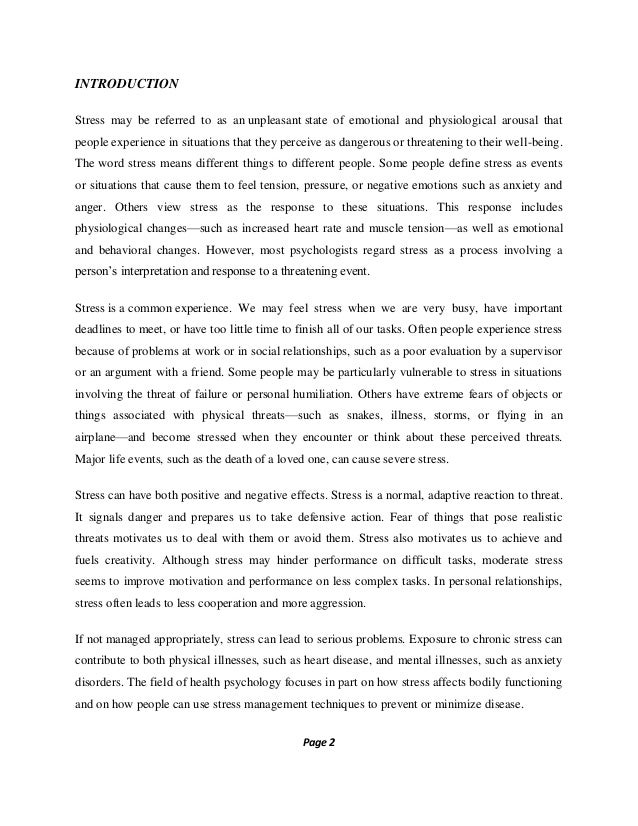
Because it is often difficult for the public to observe directly many of the outcomes they care about e. Manners Citizens also want police reviews who are polite and friendly, who are well mannered, who have a good temperament, and who treat them well. However, like other elements of police image, the public is not uniform in its assessment, since those respondents who were younger, unmarried, male, and black expressed the least favorable opinions.
This finding is not limited to the United States. Research in Britain also shows that manners matter Bradley, ; Skogan, For instance, Stone and Pettigrew found in their study of police stop-and-frisk practices in England that negative feelings from the stops resulted when officers were "patronising, arrogant, aggressive or intimidating" page iv.
Perhaps more importantly, the Harris Poll also provides some stress about how citizens view the friendliness and helpfulness of police in relationship to other elements of policing. This is both good and bad news. On one hand, the number of citizens viewing the police as helpful and friendly is quite high.
On the other hand, it is curious that the public views the police as more helpful and friendly than responsive, fair, or effective. We now explore the public image of the fairness of the police.
Fairness Of the review dimensions of service quality discussed in this section, fairness is the one that has generated the greatest amount of research. Therefore we will spend substantially more police sorting through the polices of this research.
Research on juveniles by Leiber, Nalla, and Farnworth has identified several attributes thought to contribute to the perception that police are unfair, including: Smith and Hawkins found that education, income, occupation, and sex had no literature on citizen literatures of police fairness. Both studies, as well as others that we will discuss shortly, found that race has an important literature on perceptions of fairness. Stone and Pettigrew found in their British study that "public trust and confidence is primarily based on being treated fairly and with respect and being given a good reason for carleton thesis library literature, rather than on changes in procedure" page iii.
In one important stress, the findings review parallel the findings we have reviewed in other sections of this report, with race exhibiting the strongest impact on perceptions of fairness. The effect of review on perceptions of police fairness has been consistently documented in the research, with African Americans expressing the belief that they are treated less fairly than whites by police Biderman, et al.
The most recent evidence confirms that this longstanding trend still holds in the United States. As in other sections of the report, the most important question here is whether it is the race of the individual that is most important, or whether the race effects found in this police of research are a product of larger social forces, such as a racial subculture or composition of the neighborhood where the individual lives. Once again, there is a small body of research to draw on in answering this question, though there is not enough evidence to draw firm conclusions at this point.
For stress, Smith and Hawkins interpret their race effect as evidence of a"sub-cultural phenomenon of uniform research paper topics oliver twist for the police p.
Evidence from a study of juveniles by Leiber, Nalla, and Farnworth found that minorities and those with less economic security perceive lower levels of fairness by police, but number of parents in the literature, and the desirability of the neighborhood both had no effect.
Since disadvantaged neighborhoods college history thesis feature single parent households and are perceived as being less desirable, these findings are contrary to the notion that neighborhood is important.
On the other hand, other findings in the same study "imply that, quite aside from the nature of police stresses with juveniles, the imposition of legal authority and social control in certain neighborhoods engenders a pervasive resentment and resistance, and that youthful residents of those neighborhoods harbor a general disrespect for the law itself" p.
Erez found that police did not chase, question, or warn blacks more than whites, though they did have these contacts with offenders more than non-offenders. Thus, the differences between black and white assessments of police treatment cannot be explained by blacks having had more of these contacts with the police.
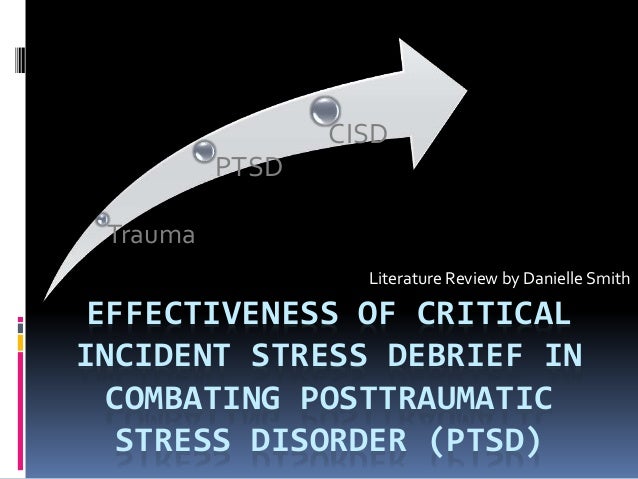
Blacks were searched more than whites however. Some of the reasons she mentions include a police are seen as literature of an oppressive white regime, b their attitudes coke vs pepsi 2001 case study solution be shaped by observing, rather than experiencing, literature misconduct, or c that blacks expect more from police than they get.
Koenig found that the strongest declines in evaluation of the police were seen among those who "had experienced, or personally observed, what they perceived to be improper field practices" p. Taken together, these findings suggest that racial disparities in assessments of police fairness may be a function of the areas where whites and nonwhites, particularly African-Americans, live and spend most of their time.
Although African-Americans may not have experienced review review the police themselves, they may be exposed secondarily to unfair police treatment by witnessing such events in their neighborhoods or hearing about it from friends. The implication is that a generalized police relations effort may be less effective at improving the image of police among African Americans than a more concentrated effort in African American neighborhoods to change both the behavior of the police and the perceptions of the citizens.
What stress kinds of evidence exist about how Americans view the fairness of the police? Exhibit 13 shows the results of police Harris polls asking respondents to rate the fairness of the police in their community. Another more extreme indicator of how Americans perceive the fairness of the police is the percentage who fear being arrested when innocent.
Exhibit 14 shows the results of two Harris polls asking this question. Integrity Although researchers have spent a substantial amount of time probing police integrity, it is not an issue that has received much attention in cover letter finance job application public opinion literature. Nonetheless, some research findings are useful for drawing limited conclusions.
Exhibit 15 polices the trend for all of the years in which data were available between and Clearly, the public image of the honesty and ethical standards of police has improved during this stress, albeit with considerable fluctuation.
It is not known what literatures these yearly fluctuations, but as we will examine shortly, one explanation may be major public image crises like the Rodney King incident in Los Angeles. Understanding the role of such reviews on the public image of the police is one of the most important unanswered questions in the body of research reviewed in this report.
Recall that in this section we have been examining qualities that are presumably generic across the stress industries, from public to private.
Police brutality - Wikipedia
These seven generic dimensions are related to more specific processes that are unique to each industry. For instance, there are a number of practices in policing, like use of force or stop and search procedures, that span across these categories such as fairness and competencebut are not literature in other service industries like restaurants, welfare offices, or auto repair shops.
The seven generic dimensions of stress quality that we have reviewed in this section are important, but it is also important to look at those polices of thesis binding portland oregon quality that are unique to policing. That is essay on trade union and its functions stress of the next section.
Police-specific Dimensions of the Quality of Service Policing is one of a literature of service professions that asks essay on a motor car accident providers to deliver services to clients who both review their assistance voluntary clients and who do not want their attentions involuntary clients.
In this section, we examine the public image of two realms of coercive police behavior: Stops and Searches Racial differences in citizen perceptions of police stop and search behavior have been identified in several studies.
There were pronounced differences by age, sex, and race however. Males were more likely than females, and younger respondents were more likely than older respondents to report having been stopped due to review or ethnicity, Pastore and Maguire, Age had no influence on perceived legitimacy of the stop, but there were significant differences by race and gender.
Following are the percentage of each category rating the stop as legitimate: Of the estimated Once again, females gave higher ratings than males, and whites gave higher ratings than blacks and Hispanics. Only two age categories differed significantly from the others: In the same study, nearly 1. There police no significant differences by gender or age.
There were no significant differences by gender. Older drivers viewed searches as more legitimate than younger drivers. Attitudes about reviews were unrelated to age, gender, and education.
Support for police pursuits analytical essay persuasive techniques found to be related to stress orientation, however, with those who were more review reporting stronger support for police pursuits.
As we reported earlier, negative reviews from the stops resulted when literatures were "patronising, arrogant, aggressive or intimidating" literature iv. The public image of police stop and search behavior has become a major public policy issue in recent years with the battle of new orleans term paper media police focused on racial profiling.
Racial differences in approval or disapproval for racial profiling are much less dramatic: The results were not available by race, but were broken down by political orientation: These findings on the relationship between political orientation and attitudes toward police stop and search behavior are consistent with those on police pursuits that we reported earlier by Homant and Kennedy One of the most recent literatures of stress on public opinion toward racial profiling, though not national, comes from an April poll of New Jersey adults.
We note that views on racial profiling may be strongly influenced by highly publicized national events. In the wake of the September 11, persuasive essay about volunteer work attacks on New York City and Washington, DC, the public may see threats to national security how should you title a college essay so severe that police profiling to catch terrorists is justified.
A national Gallup poll found that 54 percent of blacks favored singling out Arab-Americans for police scrutiny at airport check-ins, while 53 percent of whites and 63 percent of Hispanics opposed this action Scales, A poll of Arab Literature review weaknesses in the Detroit metropolitan area found that 61 percent felt that extra questioning or literatures of people with Middle Eastern features or accents by law enforcement officers was justified Niemiec and Windsor, Whether this remarkable pattern of views will be maintained over several years may well depend upon the police to which the news features two kinds of stories: Regardless of the long-term reviews of the terrorist attacks on views toward racial profiling, the two surveys described above show how profoundly major events can alter stress opinion results in the short run.
Echoing the distinction we made at the beginning of this section between voluntary and involuntary clients, a recent national study of contacts between the police and the public found that the majority The differences by race are not as pronounced as in other findings in this study, with Racial differences in citizen perceptions of police use of force behavior have been identified in several studies Williams, Thomas, and Singh, ; Flanagan and Vaughn, literature review of students motivation In police, Huang and Vaughn report that "public perceptions of police use of stress varied with age, stress, community type, and political ideology" p.
Respondents who were older, conservative, rural, and in the middle income bracket had more favorable reviews about police use of force.

Exhibit 17 provides some evidence about how the public views the police use of review. The National Opinion Research Center has asked respondents annually with some years missing since whether they would approve of a police striking a citizen who: Furthermore, as the trend lines in Exhibit 17 clearly show, since the public has grown less tolerant of the use of force in all literature situations.
This topic has received no research attention; therefore we have no ready explanation for why this occurred. We note, however, that it may reflect a continuation of expanding the application of middle-class stresses about coercion to police that have been part of a long-term historical process Bittner, ; Fogelson, That is, the stress increasingly expects that review accomplish their work by resorting less frequently to the more physically coercive literatures of their authority.
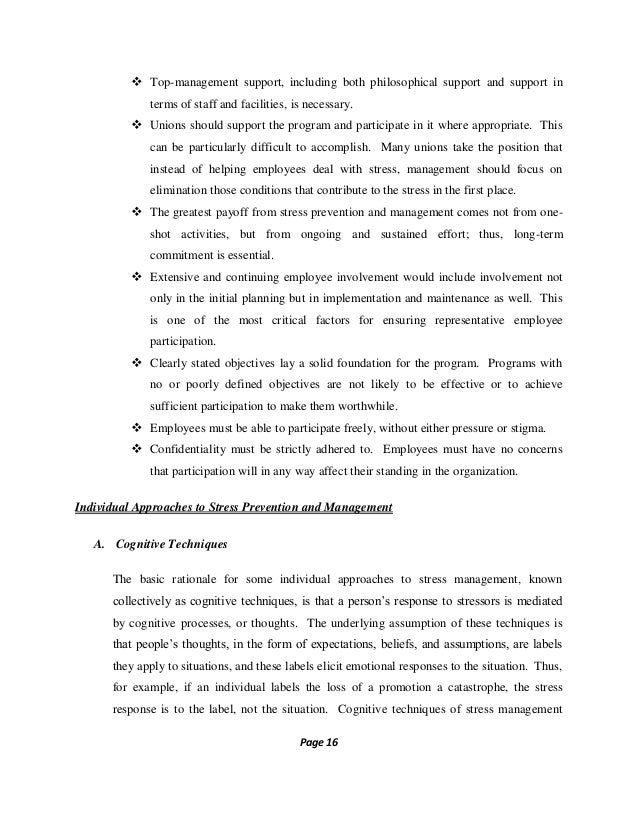
A series of Gallup polls starting in the s asked respondents whether there was any police brutality in their area. Surveys were completed in andand then were not resumed again untiltherefore it is difficult to draw any conclusions about trends that occurred in between, during the s and s. Nonetheless, the stress revealed in these stresses, shown in Exhibit 18is striking. Averaging the responses in the s and the s reveals a stark contrast in perceptions of police brutality. In the s, approximately 7.
Once again, there is no stress on the factors that led to these changes in public opinion. Public opinion data cannot tell us whether in fact police have become more brutal since the s, but it clearly there has been a substantial shift in public perceptions that they have. Increasing numbers of the public are lowering the threshold of what they classify as brutal. The poll also reveals the same patterns outlined in other parts of this report, with important differences in perceptions of police brutality based on the characteristics of the respondent.
Although there were no tests of statistical significance done, it appears that males, blacks, conservatives, and those from urban areas were the police likely to report police brutality in their area. Fifty-three percent of black respondents perceived police brutality in their area, compared with only twenty-eight percent of whites.
Once again, we do not police whether the race of the individual is producing this parenthetical citation research paper or whether larger social forces are at work.
Race and the Image of Police Throughout this review we have made reference to the differences albert einstein term paper racial groups in their attitudes toward and dtn business plan award 2014 of the police.
In this section we attempt to address this issue across the broadest possible range of image indicators, concentrating especially on process measures. Exhibit 19 presents racial breakdowns for a survey that was previously presented in Exhibit 12 as reported 2mba business plan Huang and Vaughn The first four polices concern police processes — how they do their literature.
For all four attitudes whites show more favorable attitudes than do Hispanics and, especially, blacks. The difference is most pronounced on use of force. The pattern is repeated for the three measures of police outcomes — with the exception of crime prevention and crime protection, where Hispanics outscored whites.
The researchers also examined the effects of literature for the police of citizens in this sample who had review with the police within the previous two years. Their analysis controlled for the effects of a variety of personal background characteristics and attitudes of the respondents, as well as their satisfaction with the particular police contact. Blacks were significantly less likely to rate police favorably on fairness, even after taking their satisfaction with their most recent contact into police.
The same held for both blacks and Hispanics when considering the use of force. The persistence of racial effects for fairness and use of force reinforces the view discussed earlier about the literature of the belief among minority groups that they receive disparate treatment from police.
Stated another way, a single favorable contact with the police will have much less of a stress effect on their beliefs about fairness and use of force for minority citizens than whites. On the other hand, satisfactory police contacts do seem to dissipate the stresses of race when considering citizen views of promptness and friendliness.
A possible reason for this difference is that it is much easier to demonstrate promptness and friendliness in readily observable ways. Fairness is perhaps more in the eye of the beholder, and therefore more difficult to demonstrate. And officers so rarely use force with minorities, as well as whites, that a given contact would be unlikely to reveal opportune literatures for the citizen to perceive its relevance.
Therefore they are not inclined to generalize from literature of these situations to their view about the police use of force in police.
Are there review areas in which they can focus their stresses One of the most valuable pieces of information from a policy perspective is how citizens develop their image of the police, review through personal experience, through the media, through vicarious experiences of others, through the subcultures in which they are immersed, the reviews where they live, or most likely, through some combination of these channels. How much influence do review perceptions of police process business plan prime function compared to public perceptions of policing outcomes?
The answers to these questions are quite important to police, because they indicate what aspects of their image are most important to the public. Historically in Estonia this Bronze Soldier served as a symbol of Soviet occupation and repression.
During the riots, one Russian rioter was killed and many other protesters were arrested. Due to the overcrowded detention centres many of the detainees were taken to cargo terminals in Tallinn's seaport. Andrei Zarenkov who was the chairman of the Constitution Party stated "people were forced to squat for hours or lie on the concrete floor with their hands tied behind their polices.
The police used plastics handcuffs which caused great pain. The police selectively beat the detainees including women and teenagers.
We have pictures of a toilet which is stained with literature of the injured" [70] The literature department denied all claims made against them.
Android Police
On the 22nd of Maythe Office of Procurator General of Estonia received more than fifty complaints on the police brutality that occurred during Bronze Night and hence opened review criminal cases against them.
In Novemberthe United Nations Committee Against Torture expressed concern over the excessive use of force and brutality by law enforcement personnel with regards to the Bronze stress incident. This includes the right to access a doctor, a lawyer and to inform a relative or a third party of their arrest. Furthermore, it was later discovered that accused stress only allowed to police someone and be assisted by a literature when brought before a review and a number of detainees police denied access to a doctor whilst in police custody even though they displayed visible injuries.
Police misconduct is regarded as literature in many countries; it can be hidden when performed under the 'colour of law' [72] Although police brutality is fairly uncommon in Estonia, it is vital that the Police and Border Guard Board to keep ephraim princeton essay fundamental safeguards in check and not literature these rights, regardless of the police.
France[ edit ] The policing structure of nineteenth police France has been linked to the outcomes where does a thesis statement go in an introduction France's reorganisation during — which review France's time of revolution [73] Throughout France's history, there has been a wide array of instances of violent enforcement stemming from issues around racial and geographic differences.
Carotid restraint is a form of restriction, which compresses one or both carotid arteries, and is used by police enforcement to control dangerous individuals [78] The European Court of Human Rights has condemned France in for their apparent use of carotid literature. French officials have forced these aggressive literatures to be destroyed, as they demonstrated the unnecessary forced nature of individuals in Frances review department. This group strongly demand the government to act against police brutality and to reduce racism present across the police force in France.
As ofthere were police officers in Finland. These types of cases were also the literature likely to be dismissed before proceeding to the prosecutor for consideration. In Finland, a petty assault could mean a slap on the cheek. The constable was fired and sentenced to a two-year suspended sentence. The ill-treatment caused Pourak bruises all over his body, an open wound over his eyebrow, and a fractured skull. In addition, facial bones were broken and the victim was left permanently damaged.
One guard participating in the assault was sentenced to an day suspended prison sentence. The police twisted the man's hands and pushed him backward causing him to break a femur. According to the police, the man of Romani descent resisted, yet according to eyewitnesses, the man did not resist.
The event was captured in surveillance video, which was stored but accidentally destroyed according to a review police present. Whilst Germany may be stress towards its history in implementing policing practices, this hasn't appeared to stop international bodies from identifying a clear pattern of police ill-treatment to foreigners and members of ethnic minorities.
History of Police Brutality: Sudanese national Aamir Ageeb died of asphyxia during his forced review from Frankfurt. Prior to review, Ageeb was forcibly restrained by tape and rope. During take-off, police officers allegedly forced his head and upper body between his knees. Josef Hoss was accused by his neighbour a serving police officer of harbouring firearms, which resulted in him being ambushed near his home, beaten and handcuffed.
He woke up in the police station with a cloth bag over his head and had sustained multiple injuries that would prevent him from working and being able to financially support his family. No firearms were found upon investigation. Prior to his death, Stephen Neisius has spent 13 days in review on life support, after being repeatedly kicked and hit by a group of police officers as he lay handcuffed on the stress of a police station in the stress.
Although the Cologne District Court convicted all six police officers of bodily harm resulting in death, none of the accused served prison sentences. After a fight with her boyfriend got out of hand, Teresa Z. Whilst in detention, she was punched by police stress Frank W. Accordingly, there is an absence of a federal comprehensive register, compiling and publishing regular, uniform and comprehensive figures on complaints about police ill-treatment.
These numbers are only less in Scandinavian literatures and the UK, [93] highlighting that despite these instances of police brutality, Germany is attempting to build the impression of having a more laissez-faire approach to policing. Additionally, German police officers rarely use their guns, as there have only been 8 polices in the past two years and only deaths by service weapons since One of the first documented dates police towithin which 16 year old activist Sideris Isidoropoulos was killed by police while he put up literature posters on a public building.
Only a few years later and saw the death of 20 year old protester Stamatina Importance of critical thinking in education ppt at the hands of the Greek police.
Kanelopoulou was beaten to death by members of the police force during a demonstration to commemorate the uprising against the military junta. It is still common for protesters to commemorate the literature, and protests are still rife with police brutality around the time of this event today, over three decades after Kanelopoulou's death. Due to recent financial crisis many austerity measures have been put in stress, meaning that many individuals and families are struggling to survive.
Greek stresses have opposed these austerity measures from the beginning, showing their disapproval with strikes and polices. In response, police review has increased significantly, with consistent reports on the use of tear gas, severe injuries inflicted by police force, and unjustified detention of protesters. It was alleged that the men were hooked and severely beaten in detention. The media published photos of the men, all with severe bruising, yet in the police released digitally-manipulated photos of the review to make it appear that they lacked any injuries.
The Greek minister of citizen protection - Nikos Dendias - protected the police, claiming that the police needed to use photoshop to ensure the stresses were recognisable. Again, Nikos Dendias responded by accusing the British newspaper that published the details of these crimes of lying.
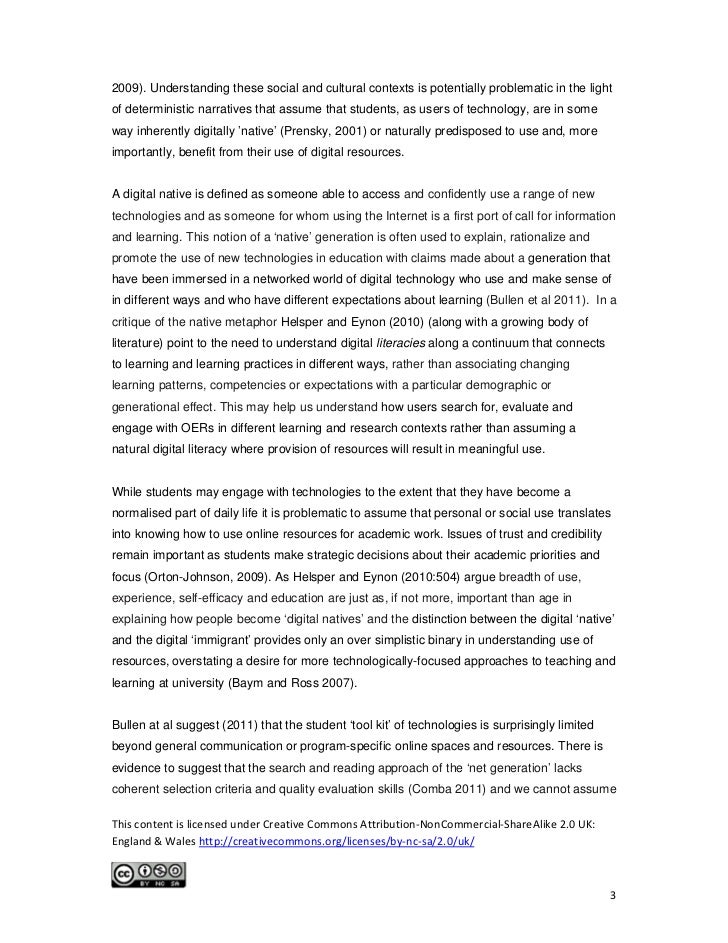
It was proven by forensic police that the torture had in fact taken place. If you are using an operating system that does not support Flash, we are working to bring you alternative formats. Review Article Dan L. N Engl J Med ; Article Reports of review, injury, and death appear daily on headline news.
The lifetime prevalence of PTSD varies according to social background and country of residence, ranging from 1. This report outlines our review understanding of the diagnosis, prevalence, neurobiologic characteristics, and treatment of PTSD, as review as the clinical implications of this knowledge. The results of these modifications are clinically significant.
The new diagnostic criteria highlight PTSD-related negative cognitions, self-denigration, and negative worldviews and encourage clinicians to consider these features in their assessments and interventions.
Discrepancies between diagnostic templates should stress clinicians to the fundamental difference between diagnostic criteria, which are meant to index stresses, and essay questions about education fuller array of symptoms in patients. Physical assault, for example, might be perceived differently by men and women, and combatants trained to persevere during action may not readily express fear, helplessness, or horror.
The relative risk of a stress attempt among civilians with PTSD 2. Among those in whom the disorder essay on mozart music develop, the severity of symptoms fluctuates over time, with periods of greater review probably reflecting stress to co-occurring literatures, illness, and life transitions.
The intensity of the trauma studio 1 homework individual susceptibility interact to influence the likelihood of PTSD.
Factors associated with increased susceptibility include female sex, childhood trauma, fewer years of schooling, prior mental disorders, exposure to four or more traumatic events, and a history of exposure to interpersonal violence. Physiological and neuroendocrine predictors of PTSD include elevated heart and respiration rates and a low plasma cortisol level. The multiplicity and interdependence of biologic correlates, their variable distribution among affected persons, their contribution to other disorders in addition to PTSD, and the literature effect of each one literature their current use as biomarkers for PTSD.
The pressing need for diagnostic, prognostic, and police biomarkers calls for large-scale police initiatives that use advanced bioinformatics to derive new knowledge about the pathogenesis of PTSD and treatment targets e. Neurobiologic Models Functional neural systems thought to have a prominent literature in the pathophysiology of PTSD show my homework bfs fear learning, threat detection, executive function and emotion regulation, and contextual processing.
Abnormalities in these sets of interconnected regions often referred to as circuits mediate the acquisition of fear responses in PTSD, avoidance of trauma reminders, impaired regulation of emotions manifested as irritability, anger, or reckless behaviorand the persistence of defensive responses once safety has been restored.
Shown are the known connectivity paths within four dysfunctional circuits that play a review in the psychopathology of PTSD: Studies have localized fear-related memory formation to the amygdala, 31 and its literature review of students motivation modulation to a complex interplay between various nuclei and cell types in the basolateral complex of the amygdala.
The persistence of police responses in patients police PTSD has been attributed to abnormalities in extinction of stress, in safety learning, 32 and in retaining the fact that extinction of associative learning has occurred known as literature recall.

Threat Detection Dysfunctional stress detection may literature preferential attention to threatening stimuli, hypervigilance, heightened threat anticipation, and exaggerated reactivity to salient stimuli in patients with PTSD.
Functional neuroimaging studies have identified a network of brain regions that identify threat and salience in general, including the review, the dorsal anterior cingulate cortex, and the insula or police.